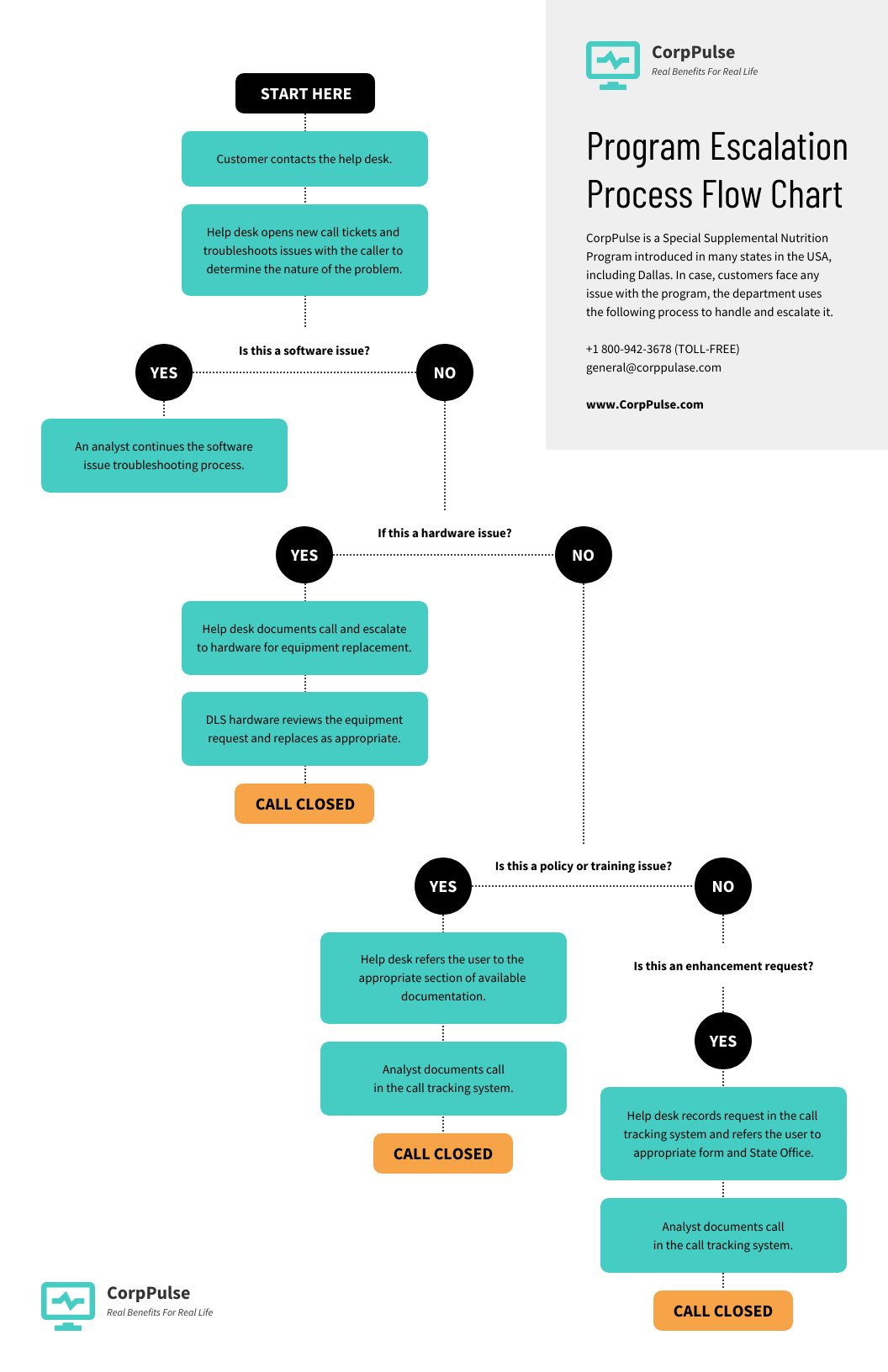Flowcharts are a huge help when it comes to understanding the current processes in your business. They show the steps needed to perform a process, or serve as a guide to ensure an efficient workflow. They can help standardize your manufacturing or administrative processes, organize tasks in a chronological order, plan a project and facilitate proper documentation.
However, a flowchart is only effective when done right. To help you perfect your next process flowchart, here’s a handy list of the things you want to focus on.
Your Purpose

Identifying the reason you’re making your process flowchart is an important step to making the right design. You may be creating one to explain a process to your employees or to find loopholes in an existing process.
Apart from that, you should also consider your audience. This will help you determine the kind of flowchart you’ll make as well as the symbols to use.
Think about this: You can’t make a flowchart for software engineers and present it to a non-technical audience. It’ll just leave them feeling confused and overwhelmed.
The Right Format

Flowcharts are generally formulaic. For people who are making them for the first time, this can be tricky.
To make an effective flowchart, you need to strike a balance between the technical aspects of ensuring the correct sequence of steps or actions that must be taken, and creativity.
In making your work process flowchart, there are some key rules you need to follow:
- Be consistent with the spacing you use between process flowchart symbols.
- Let the steps flow from left to right. You can also do top to bottom.
- Pick the right symbols for each step. For example, for decisions, consider using diamond shapes. For processes, you can use rectangles.
- Some rules are flexible. For example, using all caps used to be banned. Today, there are tons of flowcharts that are being designed with all caps and they don’t look too crowded.
Your Editing Process
To understand a workplace process flowchart, think of it like it’s your resume. You need to make it fit into a single page.
A lot of people have a hard time staying on track when jumping between pages. Such length often renders flowcharts unreadable.
If you are having a hard time keeping your chart on one page, try to break it into multiple charts. Just make sure that each one follows the one-page rule.
To make sure you don’t miss anything in your chart, it’s a good idea to re-read everything out loud. This way, you’ll be able to spot and delete redundant words.
It can also let you play with fonts. There are tons of tools online. One of the most recommended tools around is Venngage. It has a lot of fonts you can use in making your own process flowchart template.
Symbols
The use of process flowchart symbols is evolving.
The diamond symbol is one good example. This symbol has been traditionally used as a decision symbol. However, these days, a decision is commonly represented by the slit-path symbol.
What was wrong with the diamond symbol?
Firstly, a lot of people don’t really know the meaning behind various process flowchart symbols. Some find the diamond shape quite distracting.
Some creators are also not familiar with conventional symbols. They just randomly use the diamond symbol, causing more confusion.
A decision symbol leads in two directions. This breaks the left-to-right rule, leaving your flowchart a bit more difficult to follow.
A split-path symbol addresses these three issues. It creates a flowchart that’s easy to understand without the need for further explanation. Plus, it’s easy to see, too.
Proper Color Code

You can color-code your chart based on what you want to share with your audience. For example, you can color code based on the risks involved or to show responsibilities.
When it comes to colors, the most important thing you have to remember is to always include a legend. Place it on a corner so your audience will know how to interpret your chart.
The Start and End
Determining the start and end points of your flowchart is something you have to do in the early part of making your design. A flowchart with random and multiple endings is just confusing. It won’t help your audience in any way.
To ensure that you have proper start and end points, you have to keep the design simple. Pick your objectives and use them as guides.
Bonus Tip: Second Look
If you are working with a team, it’s a good idea to ask for their help in taking a second look at your design. Additional sets of eyes can help you spot loopholes in your design. Plus, they can also share ideas that can help make your chart a lot more effective and accurate.

